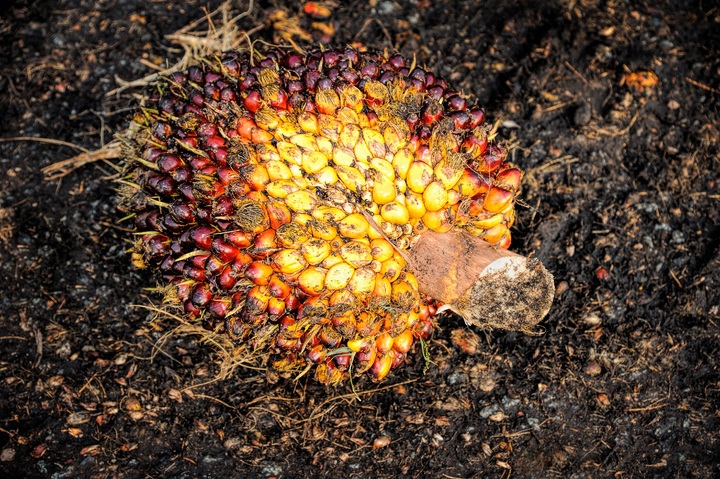Indonesia has made several policy interventions to stabilise the price of cooking oil and address the causes of a gap in supply and demand of crude palm oil (CPO).
Still, short-term policy interventions have created more problems than they solved, failing to allocate resources for optimal use in the economy.
Indonesia has been facing a cooking oil price crisis since late last year, due to several factors including supply shortage, distribution issues, and international factors such as the war between Russia and Ukraine.
Meanwhile, CPO prices have continued to climb since May 2020. Prices in May 2022 showed a 52.23% increase from the average CPO prices in 2021, from Rp10,795 per kg (74 US cents per kg) to Rp16,433 per kg.
Higher prices and supply shortage of CPO can be attributed to circumstances at home and abroad. The war between Russia and Ukraine, for instance, led to tighter supplies of vegetable oil in the international market. Other factors include the rising use of CPO for biofuel mix in the back of weather disruption.
Unfortunately, the government’s CPO trade and distribution interventions did not yield satisfactory results. Policy changes have been frequent since the beginning of the year, indicating a series of failures in ensuring consumer access to affordable cooking oil and productive income for farmers.
Short-lived policies
First, the government set a price ceiling (Harga Eceran Tertinggi/HET), a domestic market obligation (DMO) and a domestic price obligation (DPO). But these policies proved ineffective in ensuring the availability and affordability of cooking oil for domestic consumers.
DMO and DPO were implemented earlier this year, revoked in May but reinstated in June..
The DMO policy obliges companies to distribute one litre of cooking oil for domestic consumption for every three tonnes of their CPO exports. Meanwhile, a DPO ensures consumers can purchase products within a price range set by the government.
Starting in July, the government promises consumers can buy bulk cooking oil at Rp14,000 per litre or Rp15,500 per kg through the PeduliLindungi app or by showing an ID card. This was intended to trace the distribution and limit the purchase of bulk cooking oil to 10kg per person, per day.
The government attempted to guarantee the availability of CPO stocks in the domestic market with these instruments. But these instruments, due to complex domestic factors –- such as competition with biodiesel, market structure, oil palm productivity, and logistics, failed to ensure domestic stocks were allocated for the cooking oil industry.
Second, the government imposed an export ban, hoping that dramatically increasing the domestic supply of CPO would curb the increase in cooking oil prices. However, instead of keeping the prices low, the policy led to falling prices of oil palm fresh fruit bunch, provoking protests from farmers.
Third, the government lifted the ban at the end of May after a likely increase in supply, only to be replaced by another short-term policy intervention, the “flush out” program for accelerating CPO exports.
According to the Coordinating Minister of Maritime and Investment Affairs Luhut Pandjaitan, the “flush out” program – stipulated in the Ministry of Trade Regulation No. 38/2022 issued in June – was aimed at exporting at least one million tonnes of CPO by July 31 2021. It was intended to increase the absorption of oil palm fruits for exports, therefore increasing their prices for domestic farmers.
The regulation allows exporters not registered in the bulk cooking oil information system (SIMIRAH) to export on the condition that they pay the government an additional fee of US$200 per tonne.
It remains to be seen whether this regulation can effectively stabilise the price of oil palm fruits.
Since the reopening of the export faucet, the government has issued 251 permits for the export of 302,000 tonnes of CPO.
However, CPO demand weakened in May and June 2022. Two of Indonesia’s largest CPO importers, China and India, reduced their CPO imports from Indonesia.
India’s CPO import in May stood at 514,022 tonnes, or 10% less than in April. Meanwhile, China’s import of palm oil in the first quarter of 2022 fell sharply by 65.7% compared to 2021.
While the ongoing lockdown was behind the lower demand from China, the lower demand from India was connected to its increased imports of other vegetable oil such as soy and sunflower.
How it affects global CPO trade
Following the issuance of the “flush out” program, global CPO prices in the second week of June fell by 8.02% weekly and dropped by 11.23% monthly. At trade closing on June 10 2022, the futures prices of CPO for June, July, and August contracts, respectively, went down by 6.31%, 7.97%, and 8.26%.
This points to a global CPO oversupply, attributed to the surge in CPO exports from Indonesia. As long as the global CPO demands remain low, we can only temporarily achieve the goal of increasing palm oil fruit prices by boosting exports.
According to a World Bank study, commodity-exporting countries often try to mitigate market volatility by regulating supplies. But, history shows that such efforts are costly and usually counterproductive. Indonesia’s export ban is an example.
Drastic changes on the supply side caused by export bans lead to adverse effects, like the falling prices of oil palm fruits. Moreover, the study stresses that some countries still rely on exports of just a few commodities. The ongoing crisis and commodity price hike should be a wake-up call for these countries, including Indonesia, to diversify their economies and find sustainable alternatives to commodity trades.
How should the government address this?
Reflecting on previous interventions on palm oil, the government should improve the certainty of its trade governance by reducing abrupt policy changes and cutting down red tapes, such as those conducted to verify DMO fulfilment.
Instead of offering a “flush out” program with a US$200 per tonne price tag as a shortcut, reducing policy flip-flops and the bureaucratic trade maze should encourage shipments, free up producer stockpiles, and encourage the absorption of oil palm fruits.
On the other hand, protecting vulnerable consumers in these difficult times should be pursued through better-targeted food subsidies, such as cash and non-cash food assistance.
These are, of course, part of looming questions about Indonesia’s next trade moves. With a new Minister of Trade in place, the jury is still out on the direction of Indonesia’s palm oil and food prices policy. Also, let’s not forget the complexity of the palm oil value chain, which requires more than trade instruments but also agricultural and tenurial policy, fiscal tools, social assistance, and logistics and infrastructure to get right.



 Samsung Unveils Galaxy S25 with Advanced AI Features to Compete with Apple and Chinese Rivals
Samsung Unveils Galaxy S25 with Advanced AI Features to Compete with Apple and Chinese Rivals  Britain Awards Rolls-Royce £9 Billion Submarine Reactor Contract
Britain Awards Rolls-Royce £9 Billion Submarine Reactor Contract  Trump Issues Order to Solidify U.S. Dominance in AI Innovation
Trump Issues Order to Solidify U.S. Dominance in AI Innovation  How the oil industry and growing political divides turned climate change into a partisan issue
How the oil industry and growing political divides turned climate change into a partisan issue  Saudi Arabia Eyes $600 Billion U.S. Investment Under Trump
Saudi Arabia Eyes $600 Billion U.S. Investment Under Trump  Too many cooks? Dysfunction in Ukraine’s anti-corruption system
Too many cooks? Dysfunction in Ukraine’s anti-corruption system  Boeing Stock Drops as Q4 Loss Widens Beyond Expectations
Boeing Stock Drops as Q4 Loss Widens Beyond Expectations  Trump Launches Crypto Overhaul with National Stockpile Plan
Trump Launches Crypto Overhaul with National Stockpile Plan  Kia Reports Record 2024 Profits and Sets Ambitious 2025 Targets
Kia Reports Record 2024 Profits and Sets Ambitious 2025 Targets  Elon Musk Criticizes President Trump’s $500B Stargate AI Project
Elon Musk Criticizes President Trump’s $500B Stargate AI Project  Rivian to Revolutionize Driving with 2025 Hands-Free Tech
Rivian to Revolutionize Driving with 2025 Hands-Free Tech  LinkedIn Faces Lawsuit Over Data Use for AI Training
LinkedIn Faces Lawsuit Over Data Use for AI Training  Nintendo Switch 2 and anticipated sequels – what to look forward to in gaming in 2025
Nintendo Switch 2 and anticipated sequels – what to look forward to in gaming in 2025  Trump Optimistic About Trade Deal After Talk with China's Xi
Trump Optimistic About Trade Deal After Talk with China's Xi  Mitsubishi Motors May Skip Nissan-Honda Merger, Focus on Asia
Mitsubishi Motors May Skip Nissan-Honda Merger, Focus on Asia  Shenzhen's Yantian Port Faces Congestion Amid Lunar New Year Rush and U.S. Tariff Threats
Shenzhen's Yantian Port Faces Congestion Amid Lunar New Year Rush and U.S. Tariff Threats 

































